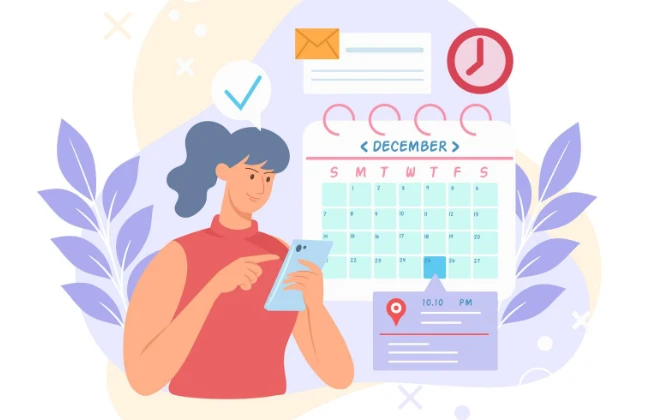How Appointment Setting Accelerates Revenue Growth
Every sales team faces the same challenge: keeping the pipeline full. You can have the best product on the market, but if there aren’t enough conversations happening with the right prospects, deals stall, and revenue slows.
That’s where appointment setting services come in. It acts as the missing link between the early stages of prospecting and the final step of closing. By presenting qualified prospects to sales representatives at the right time, businesses can shorten sales cycles and increase conversion rates.
What Is B2B Appointment Setting in Sales?
Appointment setting is the process of securing meetings between qualified prospects and sales reps. It’s creating real opportunities where both sides benefit from the conversation.
Many confuse lead generation with appointment setting. Lead generation focuses on capturing interest through ads, content, or inbound traffic. B2B appointment setting, however, takes things further by qualifying those leads and ensuring sales teams spend time only with prospects who match the ideal customer profile.
This process is often handled by SDRs (Sales Development Representatives). Some companies build in-house SDR teams, while others rely on an outsourced SDR team to scale faster and keep costs predictable. In both cases, the goal is the same: to connect sales representatives with decision-makers who are ready for a genuine conversation.
Key Benefits for Growing B2B Companies
For growing B2B companies, appointment setting services are more than just a support function. By building a steady pipeline of qualified meetings, sales teams can operate with more clarity and less wasted effort.
Consistency
A well-run appointment setting process delivers a predictable flow of sales-qualified appointments. Instead of peaks and valleys in outreach results, teams can expect a consistent stream of opportunities to work with each week.
Scalability
When handled correctly, appointment setting services allow companies to scale outreach without overwhelming account executives. SDRs handle the heavy lifting, allowing AEs to focus on the deals that matter most.
Market Expansion
Appointment setting is also a powerful way to test new verticals or regions. Companies can run campaigns in parallel, measure traction, and expand into promising markets without committing their entire salesforce upfront.
In-House vs. Outsourced Appointment Setting
Companies often face the decision of whether to build an internal SDR team or partner with an external provider. Both approaches have advantages, but the right choice depends on resources, goals, and growth stage.
- Expertise: Outsourced teams bring proven playbooks, technology, and industry-specific experience.
- Cost Efficiency: No need to invest heavily in recruitment, salaries, and infrastructure.
- Faster Ramp-Up: Campaigns launch quickly, giving companies results in weeks instead of months.
Outsourcing makes the most sense for companies looking to scale fast, test new markets, or supplement an in-house team with additional bandwidth. It’s also a strong option for startups and mid-sized businesses that want predictable results without the overhead of managing a large SDR function.
Best Practices for Effective B2B Appointment Setting
Appointment setting is most effective when it’s structured and aligned with business goals. Your process needs to be sharp, consistent, and measurable. Here’s how to get it right:
ICP and Persona Alignment
Start with clarity. Define your Ideal Customer Profile (ICP) and buyer personas so SDRs know exactly who they should target. When outreach aligns with the right prospects, conversion rates naturally climb.
Multi-Channel Outreach
Relying on a single channel is risky. The most effective appointment-setting campaigns utilize a combination of email, LinkedIn, phone calls, and even WhatsApp, tailored to specific markets. Meeting prospects where they are increases the number of touchpoints and response rates.
Personalization and Research
Generic outreach doesn’t stand out. A few minutes of research can help SDRs craft personalized messages that address real challenges. When prospects see relevance, they’re more likely to accept a meeting.
Tracking Metrics
Measure what matters. Keep a close eye on reply rates, meeting conversion, sales-qualified leads (SQLs), and revenue attribution. These metrics reveal which campaigns are working, where tweaks are needed, and how appointment setting is directly fueling growth.
Measuring the Impact on Revenue Growth
Appointment setting should always be tied directly to growth outcomes. The easiest way to see its value is by tracking the right metrics:
- Pipeline Contribution: Indicates the percentage of your total pipeline that comes from booked appointments. The higher the share, the bigger the role appointment setting plays in driving sales opportunities.
- Cost per SQL: Measures the efficiency of campaigns. If the price per sales-qualified lead is lower than that of other acquisition methods, it’s a clear sign of strong ROI.
- Win Rate Improvement: When reps focus on only qualified prospects, close rates increase. More wins with the same effort equals faster growth.
- ROI of Campaigns: Compare the full cost of appointment setting (in-house or outsourced) to the revenue generated from closed deals. This shows whether campaigns are profitable.
- Revenue Acceleration: Appointment setting shortens the sales cycle by connecting teams with decision-makers sooner. Faster conversations lead to faster deals and more rapid revenue growth.
Conclusion
By bridging the gap between prospecting and closing it gives sales teams a steady flow of qualified meetings that turn into real opportunities. Companies that prioritize sales-qualified appointments strengthen their sales teams. With consistency, focus, and measurable ROI, appointment setting helps businesses grow faster and compete more effectively in any market.







